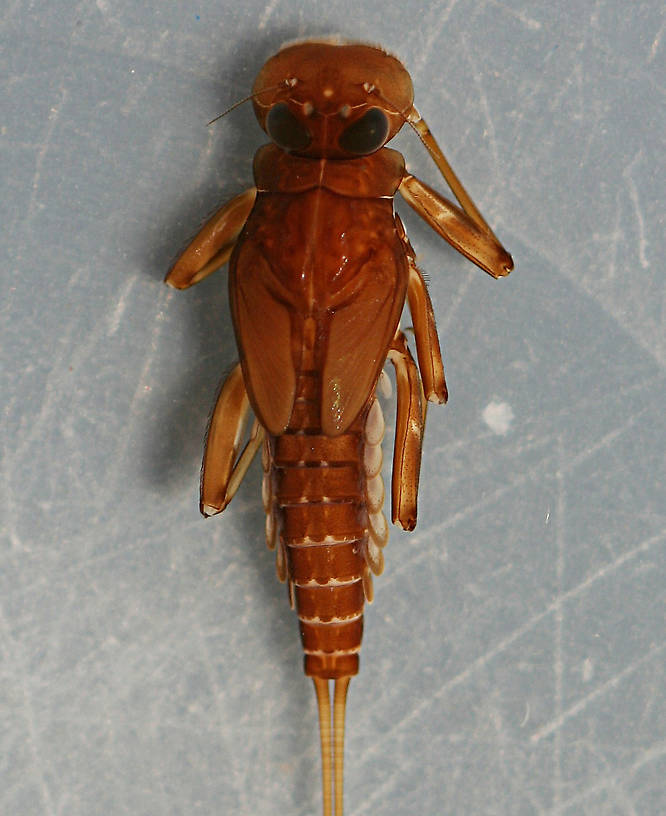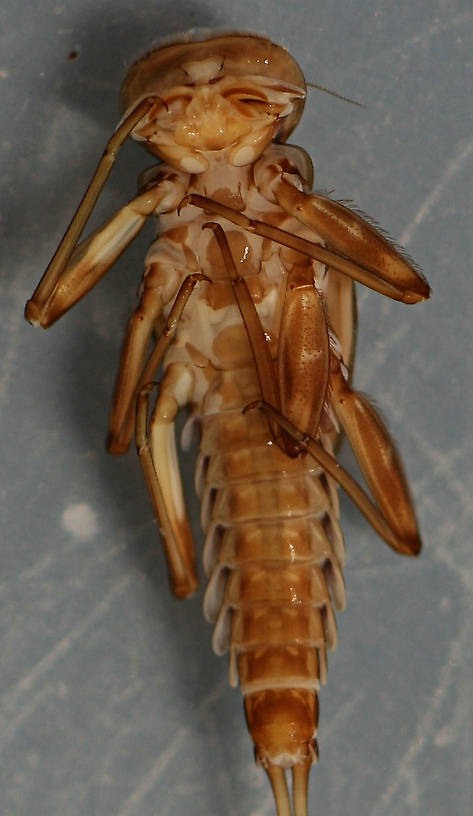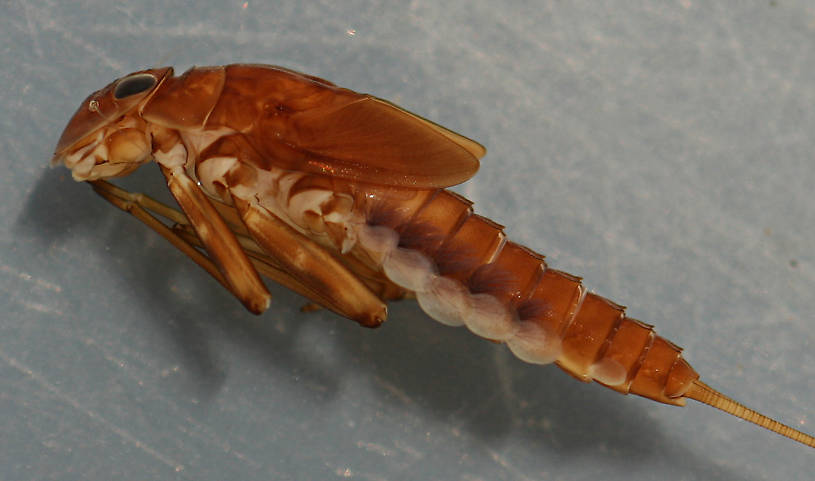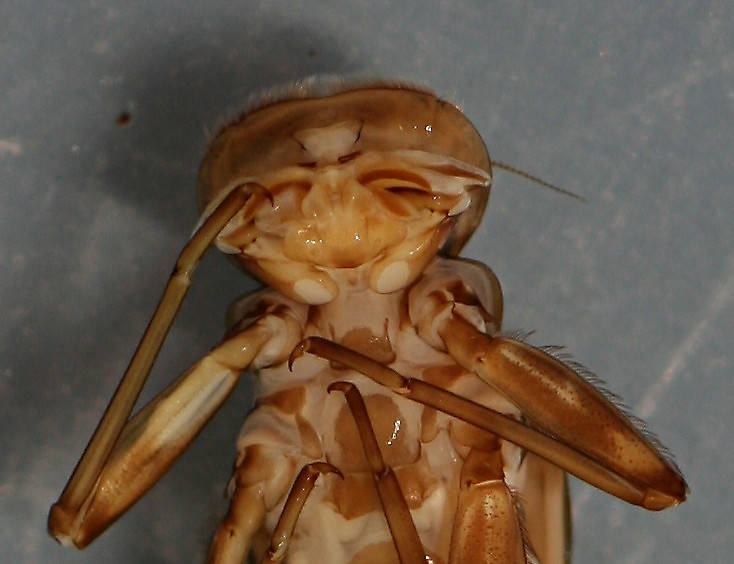Blog & Latest Updates
Fly Fishing Articles
Insects by Common Name


> > Ironodes sp.

Ironodes nymph. 11 mm (excluding cerci). Collected May 11, 2010. In alcohol.

Ironodes nymph. 11 mm (excluding cerci). Collected May 11, 2010. In alcohol.

Ironodes nymph. 11 mm (excluding cerci). Collected May 11, 2010. In alcohol.

Ironodes nymph. 11 mm (excluding cerci). Collected May 11, 2010. In alcohol.

Ironodes nymph. 11 mm (excluding cerci). Collected May 11, 2010. In alcohol.
| Millcreek | November 17th, 2014, 8:10 pm | |
| Healdsburg, CA Posts: 356 | The nymphs are members of the Heptageniidae family and are easily identified to genus. They have only two caudal filaments (tails), which narrows it down to Anepeorus, Epeorus and Ironodes. Anepeorus has interfacing setae on the caudal filaments. Ironodes has no interfacing setae on the caudal filaments . Ironodes has a pair of median tubercles on each dorsal segment while Epeorus doesn't. While easy enough to identify to genus I've only been able to find a description of Ironodes lepidus by Day in "New Species and Notes on California Mayflies (Ephemeroptera)" (1952). This leaves several species undescribed as nymphs that have been reported as occurring in California. I. californicus and I. nitidus have been reported in California and Mayfly Central lists I. arctus and I. geminatus as possibilities in the northwest United States. If anybody has any knowledge of these larvae info would be much appreciated. The nymphs are usually found in smaller tributaries of the Russian River.They were collected in riffles or shallow glides with moderate to fast flow and a substrate of large gravel and cobble. They are most common in the spring and and early summer months. When ready to emerge they can be seen on the downstream side of large rocks where they crawl up nearly to the waterline, grasp the rock firmly and molt as subimagos. I had some male adults but never got around to keying them out and haven't been able to find the vial with them in it again. | |
| Konchu | November 21st, 2014, 6:58 pm | |
Site Editor IndianaPosts: 505 | Jacobus & McCafferty (2002) suggested some color characteristics that might be useful for species diagnosis, but such characters often are variable or subject to fading. Leave these at the genus level. Jacobus LM; McCafferty WP. 2002. Analysis of some historically unfamiliar Canadian mayflies (Ephemeroptera). Canadian-Entomologist 134(2):141-155. | |
| Millcreek | November 21st, 2014, 7:32 pm | |
| Healdsburg, CA Posts: 356 | I figured I wasn't going to get very far attempting to ID these to species. Day gives some minor differences in size and coloration as distinguishing characteristics in "Aquatic Insects of California" but as you mentioned above these seem like they would be variable. Thanks for the info. Mark | |
Quick Reply
You have to be logged in to post on the forum. It's this easy:
Related Discussions
| Title | Replies | Last Reply |
| Re: Fallceon spp. (15 more) In the Identify This! Board by Millcreek | 4 | Nov 21, 2014 by Millcreek |
| Re: Serratella micheneri nymphs In the Photography Board by Millcreek | 2 | Oct 13, 2014 by Millcreek |
| Re: Epeorus sp. (longimanus?) In the Identify This! Board by Millcreek | 9 | Dec 14, 2014 by Entoman |
| Paracloeodes minutus In the Photography Board by Millcreek | 0 | |
| Re: Possible ID In the Mayfly Species Apobaetis futilis by Sreyadig | 2 | Apr 19, 2021 by Crepuscular |
| Acentrella insignificans nymphs (1 more) In the Photography Board by Millcreek | 0 | |
| Re: identification needed In Rhithrogena impersonata Mayfly Nymph by Kinza | 2 | Feb 6, 2017 by Crepuscular |
| Re: mayfly website change: Ephemeroptera Galactica In General Discussion by Konchu | 2 | Nov 12, 2012 by Entoman |
| Re: Ephemerella maculata (1 more) In the Photography Board by Millcreek | 3 | Apr 12, 2015 by PaulRoberts |
| Baetis alius In the Identify This! Board by Millcreek | 0 |
Troutnut.com is copyright © 2004-2024 Jason
Neuswanger (email Jason). See my FAQ for information about use of my images.
 privacy policy
privacy policy


